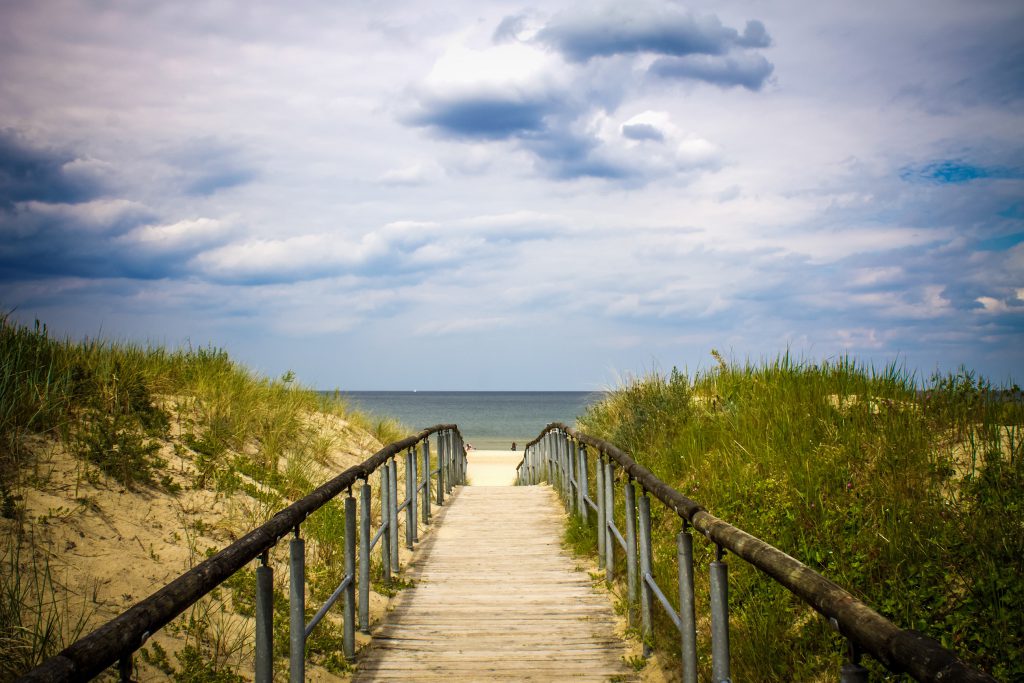Dunes are a natural barrier that protect the land from coastal flooding and tsunami inundation. They delay flooding by absorbing the impact of storm surge and high waves. Dune vegetation like sea oats, seashore elder, saltmeadow cordgrass, bitter panicum, and American beach grass bind the sand together and reduce wind-borne erosion and wave erosion.
The loss of vegetation causes sand to move inland—a process known as sand encroachment—which has damaging effects on inland properties. Breaches in the dunes allow floodwater to move inland during storms and leaves properties vulnerable.
Coastal sand dune eroded and caved in by the sea
How can walking affect dune vegetation?
If undisturbed, dune vegetation is tolerant to extremely saline water and direct, harsh exposure to sunlight. It can even grow in the absence of fertile soil and thrive despite an uneven water supply. However, it cannot survive being trampled by human or vehicular traffic. Merely ten steps over dune vegetation are enough to completely damage a dune grass colony. When someone walks or drive over a dune vegetation, its thick brittle stalk comes apart over time. Human interference is most damaging to dunes because there is no natural recovery.
How can you protect dunes on beaches?
Residential and commercial development too close to the beach attracts traffic and consequently affects the stability of dune vegetation. Here are some ways you can protect dunes from this traffic.
- Make designated walking paths, pedestrian crossovers for beachgoers
- Make the area a ‘No Playing Zone’, prohibit sandboarding and other recreational activities
- Do not allow boats and other equipment to be parked over the dune
- Install signs warning people not to walk on dune vegetation
- Install sand fencing that helps trap windblown sand and keeps people from walking on the beach grass.
- Property owners can plant beach grass individually or start a community program to plant vegetation across the coast.
